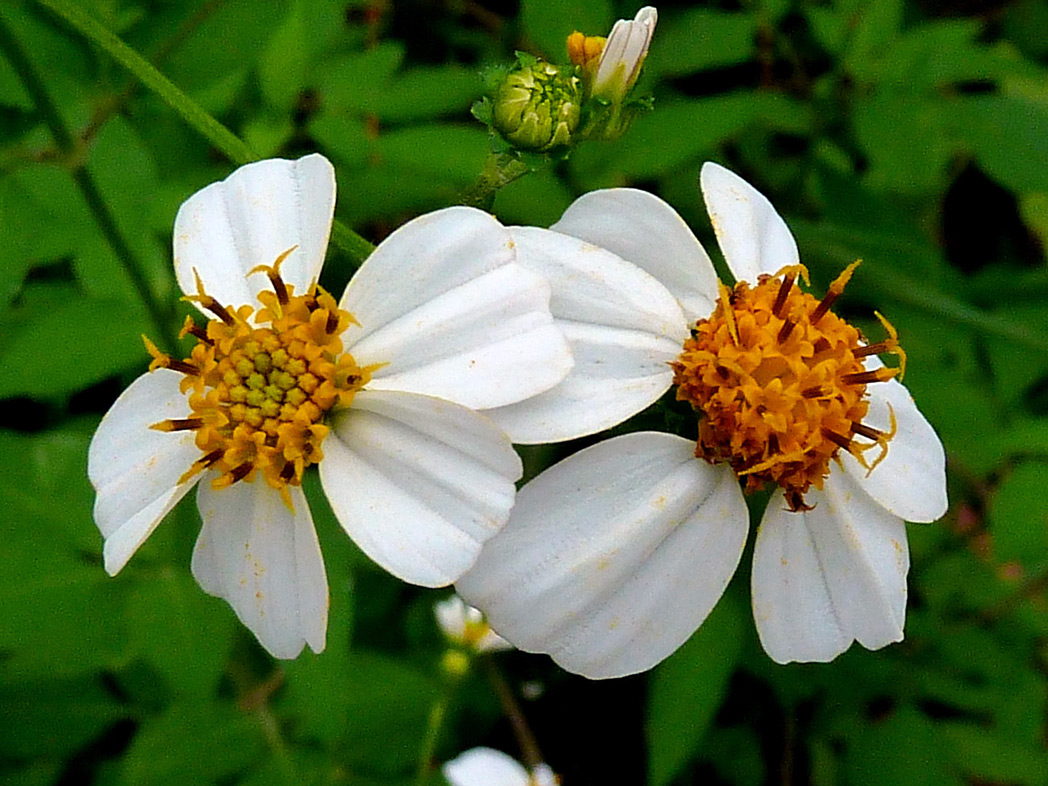Beggarticks
Pictured above: Honeybee on Beggar’s tick (Bidens alba) by Eleanor Dietrich. Click on terms for botanical definitions. View post as a PDF.
No matter what you call it — Beggarticks, Spanish needle, monkey’s lice — Bidens alba is likely the most underappreciated of all Florida’s native wildflower. It is often considered a weed because it reproduces so prolifically, but it is a wonderful native wildflower for attracting pollinators. It is a larval host for the Dainty sulphur butterfly and a favorite nectar source for a myriad of butterflies including. In Florida, it is the third most common source of nectar for honey production. Its young leaves and flowers are edible.
Beggarticks blooms are comprised of five to eight white ray florets surrounding many yellow tubular disk florets. Leaves begin simple and oppositely arranged. As they mature, they become compound with lobed leaflets that have hairy undersides and toothed margins. Seeds have two barb-like bristles on the end that stick to clothing, hair and animal fur.
The genus name Bidens comes from the Latin words bis, meaning “two,” and dens, meaning “tooth.” The species epithet alba refers to the white ray florets.
Family: Asteraceae (Aster, daisy or composite family)
Native range: Throughout Florida
To see where natural populations of beggar’s tick have been vouchered, visit www.florida.plantatlas.usf.edu.
Hardiness: 8A–11
Soil: Dry, well-drained sandy soils to rich, moist soils
Exposure: Full sun to partial shade
Growth habit: 1–4’ tall with spread of several feet
Propagation: Seed
Garden tips: A single plant can produce 3,000–6,000 seeds that are dispersed by wind and water, but most often become attached to fur or clothing. If you don’t want them to take over your garden, you must be persistent in pulling the plants before they go to seed.
For more information on other Bidens species, see these resources:

